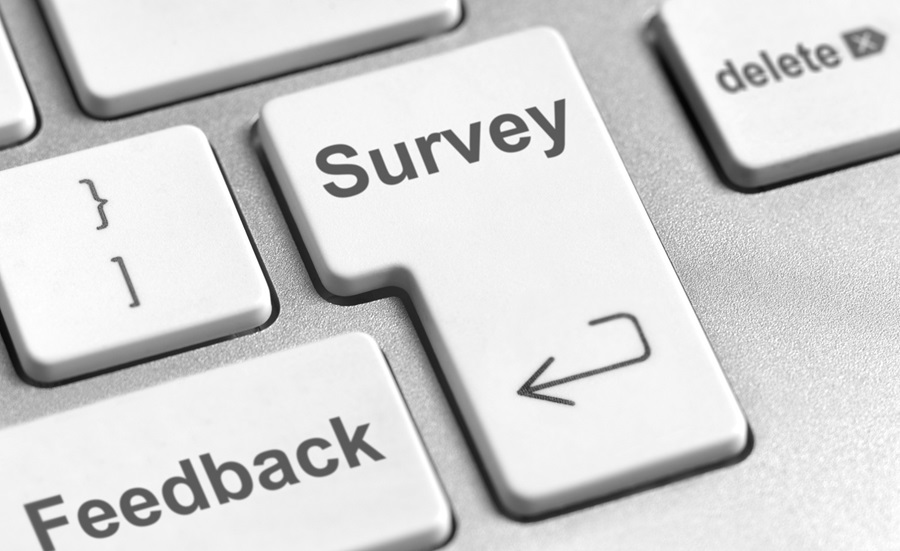Surveys are essential tools for gathering data and insights, enabling organisations to make informed decisions. They serve various functions, from understanding customer preferences to purchasing behaviour, and are a cornerstone in the field of market research.
For professionals in market research, understanding the purpose of surveys is crucial for designing effective studies and interpreting results accurately.
Defining the purpose of a survey
Before conducting a survey, it's vital to define its purpose clearly. A well-defined survey purpose ensures that the data collected aligns with the research objectives and ultimately supports meaningful insights and decision-making.
Surveys can serve different research goals, and understanding these distinctions helps shape the design and interpretation of results.
The three primary types of survey purposes include:
Exploratory Research: Used to gather preliminary information that will help define problems and suggest hypotheses. This type of research is often the starting point for deeper investigation. For example, a brand might run exploratory surveys to understand emerging consumer needs, perceptions of a new category, or early reactions to a product idea. This stage helps frame the right questions before investing in larger-scale research.
Descriptive Research: Descriptive research is a non-experimental form of research that aims to describe the characteristics of a population or phenomenon being studied. This could mean profiling consumer segments, measuring brand awareness, or tracking attitudes and behaviours over time. It’s useful for answering the “what”, “where,” “when,” and “how” by providing an observatory description of the facts.
There are two main types:
- Longitudinal research tracks how attitudes, behaviours, or market dynamics change over time. It’s often used to measure the impact of campaigns, products, or brand activity by capturing data at multiple points across months or years.
- Cross-sectional research provides a snapshot of the market at a single moment. It’s useful for understanding current audience perceptions, product usage, or brand positioning without the time dimension.
Causal Research: This type of research seeks to determine cause-and-effect relationships between variables. For example, running controlled experiments or A/B tests to see if a specific ad message drives higher purchase intent, or whether a packaging change alters brand perception. This approach is more structured and often involves controlled experiments to test hypotheses.
Benefits of conducting surveys
Surveys offer valuable benefits for any organisation. They empower stakeholders to make informed decisions by providing data-driven evidence rather than relying on assumptions. Surveys also offer a window into audience preferences, behaviours, and attitudes, which are invaluable for targeted marketing, product development, and customer experience strategies. Additionally, they serve as a benchmarking tool, enabling teams to track changes over time—whether it's shifts in customer experience or brand perception.
When to conduct a survey
Surveys should be conducted when there is a clear need for data to answer specific questions or solve problems. Whether you're exploring new ideas, validating assumptions, or tracking changes over time, surveys offer a structured way to gather insights that inform strategy and action.
A great example of this in practice is highlighted in a case study from the Profiles team at Kantar. A global media company wanted to demonstrate the value of its advertising channels to brand partners. By working with Kantar to build ongoing path-to-purchase trackers, the company was able to map consumer journeys from awareness through to purchase. These surveys not only highlighted how advertising influenced buying behaviour but also provided compelling evidence that drove revenue growth. The case shows how well-designed surveys can deliver insights that are both actionable for strategy and persuasive for stakeholders.
Timing considerations for surveys
Choosing the right moment to conduct a survey is just as important as defining its purpose. Timing can influence response rates, data quality, and the relevance of insights. Here are a few strategic moments to consider:
- Product concept and innovation research: This research is conducted early in the development process to understand how consumers respond to new ideas, product concepts, or features before they reach the market.
- Brand or category trackers: These surveys are typically run at consistent intervals to monitor shifts in brand health, category trends, and consumer sentiment over time.
- Campaign and ad testing surveys: These are used before launch to gauge how audiences are likely to respond to creative concepts, messaging, or campaign ideas, helping brands avoid misfires and maximise impact.
- Post-event surveys: Ideal for evaluating the success of an event or campaign while the experience is still fresh in participants' minds.
Preparing to create and conduct surveys
Before launching a survey, taking time to plan can significantly improve the quality of your data and the value of your insights.
Researchers should consider several factors as they prepare to create and conduct surveys:
- Defining the target audience: Start by clarifying who you want to hear from. The right audience ensures the data you collect is both relevant and representative. Consider factors like demographics, behaviours, purchase history, or attitudes to make sure your sample reflects the group you’re trying to understand.
- Designing the survey: Survey design plays a pivotal role in the success of any research imitative — from following best practices, to providing a smooth experience for respondents, to considerations for data quality, learn more in our 14-minute online survey training module: How to Create a Questionnaire.
- Survey length: Keeping surveys concise is essential to maintaining respondent engagement. Long or complex surveys can lead to fatigue, incomplete responses, or drop-offs. Aim for brevity while ensuring you capture the necessary data to meet your research objectives.
- Choosing the right methodology: Your target audience and research objectives should guide your data collection method. Online surveys are cost-effective and quick, but some audiences may respond better to phone, face-to-face, or mail approaches. Matching the method to your audience maximises participation and data quality.
Methods of conducting surveys
Choosing the right survey method can make a significant difference in response quality, cost, and speed. Each approach offers unique strengths and trade-offs:
Online surveys: These surveys are conducted using digital tools such as Accelerated Answers. They allow researchers to reach large audiences quickly and at a lower cost than traditional methods. They’re highly flexible, supporting multimedia content, complex routing, and real-time reporting. However, they require internet access and may exclude less tech-savvy audiences.
Online surveys can include several types, such as:
- DIY surveys: Researchers or businesses design and launch these themselves using online platforms. They’re fast, affordable, and give teams direct control, but they may lack advanced targeting or methodological rigor if not carefully managed.
- Quick-turn/omnibus surveys: Omnibus surveys involve sharing a study with other researchers or businesses. Multiple parties contribute questions to the same survey, which helps in sharing costs while still gathering substantial data. While cost-effective, the shared nature of the survey might limit the depth of individual client questions.
- Custom surveys: These surveys are tailored to a specific business question or audience. They offer the most flexibility in design, targeting, and analysis. Custom surveys are ideal when depth and specificity are required, though they can be more resource-intensive.
Face-to-Face Interviews: This method involves directly engaging with respondents, allowing for more in-depth conversations and clarification of questions. It can yield richer qualitative data, but they are time-consuming and usually involve fewer participants.
Telephone surveys: Conducted over the phone, these allow interviewers to clarify questions and engage respondents more personally, often improving accuracy. They can achieve higher response rates than self-administered methods but are more costly and time intensive.
Mail surveys: Sent and returned by post, these are slower and tend to have lower response rates but can be effective for reaching older demographics or areas with limited internet access. They also offer a tangible, less intrusive option for respondents.
Get on the omnibus
Do you have unanswered questions, but can’t justify the cost of running a full study? Learn more about our fast, cost-effective survey solutions that delivers representative consumer data within just one week. Learn more here.
Crafting effective survey questions
The quality of your survey questions directly affects the accuracy and usefulness of your results. Choosing the right question types and writing them well is key to gathering reliable insights.
Below are some common question types:
- Closed-ended questions: These questions provide respondents with predefined options, such as multiple-choice answers or yes/no formats. This structure simplifies the process of analysis since the data can be easily quantified and compared. Closed-ended questions are ideal for gathering straightforward information and can help identify trends across a large sample size.

- Open-ended questions: In contrast, open-ended questions allow respondents to express their thoughts in their own words. This approach encourages more detailed and nuanced feedback, offering researchers deeper insights into respondents' feelings, motivations, and preferences. While analysing open-ended responses can be more labour-intensive, the richness of the data often provides valuable context that closed questions may miss.

Best practices for writing questions
Strong survey questions are result of clear thinking, careful wording, and a focus on the respondent’s experience. Applying best practices not only improves data quality but also keeps participants engaged and willing to share thoughtful responses.
Here is some survey writing guidance to keep in mind:
- Clarity and simplicity: Keep wording straightforward, avoiding jargon or complex phrasing so every respondent interprets the question the same way.
- Avoiding bias: Phrase questions neutrally to prevent steering respondents toward a particular answer. For example, instead of asking, “How amazing was your experience?” ask, “How would you rate your experience?”
- Logical flow: Organise questions so they move naturally from general to specific, keeping respondents engaged from start to finish.
By blending closed- and open-ended questions and following these best practices, you’ll be better equipped to collect high-quality, actionable data.
Analysing survey data
Another crucial part of a survey happens after you’ve collected responses. The data analysis phase involves transforming raw data into actionable insights.
This process typically involves several key stages:
Data cleaning
Before diving into analysis, it's essential to review the responses for accuracy and consistency. Data cleaning often involves checking for incomplete answers, eliminating duplicate entries, and ensuring the data is legible and valid. This step lays a solid foundation for reliable results, as unclean data can lead to misleading conclusions.
Statistical analysis
Statistical analysis is a critical method used to interpret and summarise data collected from surveys, enabling researchers to derive meaningful insights. This process generally consists of two main components:
- Descriptive statistics: This involves summarising the data to identify patterns and trends. Descriptive statistics help you understand basic characteristics, such as averages and variations within the data set. By summarising responses, you can quickly grasp the overall sentiments and behaviours of your respondents.
- Inferential statistics: This aspect of analysis allows for making predictions or inferences about a larger population based on sample data. Techniques such as hypothesis testing and confidence intervals can provide deeper insights and enhance the reliability of your conclusions.
Reporting findings
After analysis, reporting your findings effectively is vital, especially if the results are to be shared with stakeholders.
- Visualisations and dashboards: This involves utilising charts, graphs, and dashboards to present data clearly and intuitively. Visual aids can illustrate patterns, highlight key information, and make complex data more understandable.
- Executive summaries: These are concise reports that highlight the most critical insights and recommendations derived from the data. These summaries should be tailored for stakeholders, ensuring they grasp the essential findings and their implications without having to dig through volumes of data.
By meticulously cleaning the data, applying appropriate statistical techniques, and presenting findings effectively, you ensure that your survey analysis supports informed decision-making and actionable insights.
Ethical considerations in survey research
When conducting survey research, ethical considerations play a paramount role in ensuring that the process respects respondents and adheres to best practices in data collection.
Here are three key ethical considerations to keep in mind:
- Informed consent: Informed consent ensures that respondents are fully aware of the survey's purpose, the type of data being collected, and how their responses will be used. Researchers should provide clear information about the objectives of the survey and any potential risks involved. This transparency helps build trust with respondents and allows them to make an informed decision about their participation.
- Confidentiality: Researchers must implement measures to secure the data collected and ensure that personal information remains confidential. This often involves anonymising responses and storing data in secure systems to prevent unauthorised access. Assuring respondents that their identities and responses will be kept confidential encourages more honest and accurate feedback.
- Transparency: Researchers should additionally inform participants about the intended use of the findings, whether for academic purposes, market research, or other applications. This transparency not only fosters trust with respondents but also aligns researchers with ethical standards in research practices.
By prioritising ethics, researchers can gather valuable insights while respecting the rights and privacy of respondents.
Conclusion
Understanding the purpose of surveys is fundamental for market researchers to design effective studies and derive meaningful insights. Regularly reviewing and refining survey methods and practices ensures that they remain relevant and effective in addressing research objectives. Leveraging Kantar’s Research Services and Survey Solutions for advanced survey design helps organisations optimise their data collection and achieve more accurate, actionable results.
Want to learn more?
Watch our 14-minute module: How to Create a Questionnaire which covers foundational strategies for developing effective and engaging questionnaires, including initial steps, organisational techniques, and key elements for review. Or, get in touch with our experts that can provide you with further advice based on your specific research needs and objectives.


